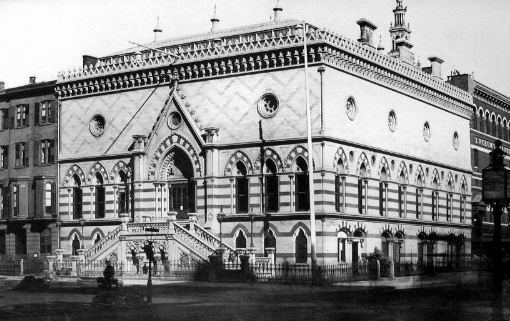Name Peter Wight | ||
 | ||
Died 1925, Pasadena, California, United States | ||
Peter B. Wight (1838–1925) was a 19th-century architect from New York City who worked there and in Chicago.
Contents
Biography
Wight's career "flourished in the 1860s and 1870s in New York, where he developed a decorative, historicist style that showed affinities to the work of European designers John Ruskin and Augustus Welby Northmore Pugin." After the Chicago fire of 1871, Wight came to Chicago and developed his interest in modern technologies for fireproof construction, founding the Wight Fireproofing Co. by 1881. The firm "designed and manufactured hollow terra cotta tiles—impervious to fire and non heat-conductive—for construction."
Wight was raised in New York City and graduated from the Free Academy. He had associations with critic Russell Sturgis and was mentored by Thomas R. Jackson, through whom he came to admire American architect Richard Upjohn and English social reformer and art critic John Ruskin
Wight opened his own office in 1862 and produced designs for the "highly decorative and polychromatic" design for the High Victorian Gothic National Academy of Design. Wight was involved in the establishment of the Society for the Advancement of Truth in Art in 1863, before leaving New York after a decline in commission to move to Chicago after the Great Chicago Fire of 1871 where demand for architects who could help with rebuilding was high.
In Chicago he worked with Asher Carter and then William Drake. Wight designed commercial and residential buildings, as well as furniture and wallpaper in the Eastlake style. He retired to Pasadena, California in 1918 where he died in 1925.
Isaac G. Perry's work designing The New York State Inebriate Asylum may have been assisted by Peter Bonnett Wight (1838–1925), the head draftsman in Thomas R. Jackson's firm, but Wight's role in the project is not well documented.
Russell Sturgis was associated with Wight from 1863 to 1868 and then practiced alone until 1880. George Keller (architect) worked at his firm in New York.
Bonnett's design for Yale University's Street Hall incorporated both the School of the Fine Arts (the first such school on a U.S. college campus) and galleries for exhibiting art. The building's entrances from the college campus and Chapel Street reflected "the donor's wishes and symbolically uniting school and city."
